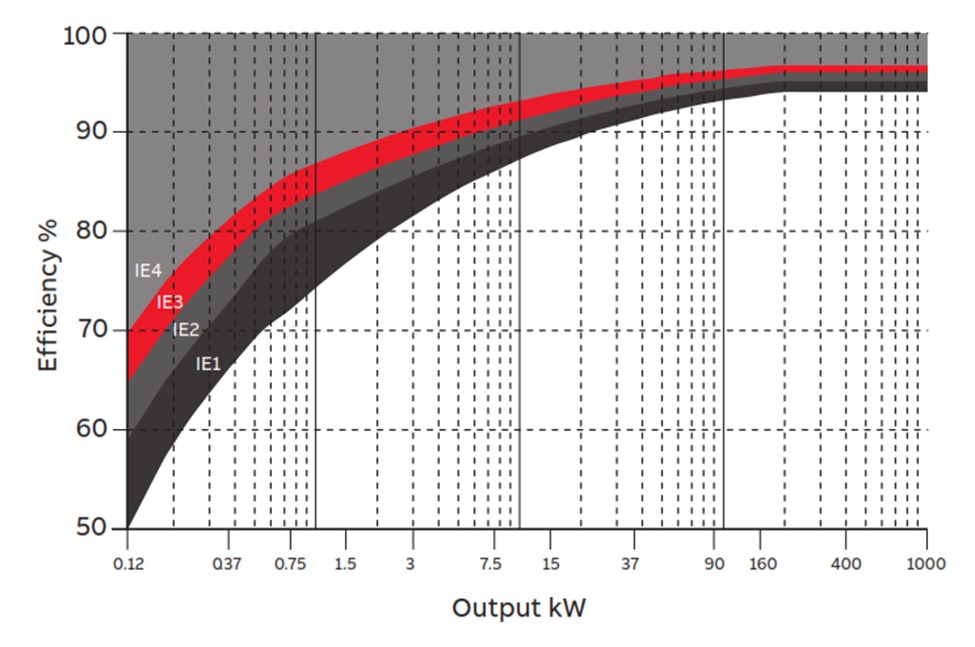

The world industry and commerce are facing an energy challenge. Global demand for energy is rising steadily. At the same time, pressures to reduce energy consumption, to lower carbon dioxide (CO2) emissions and provide secure power supplies are becoming ever stronger.
Efficient motors help cut energy costs and limit carbon dioxide emissions. It has been estimated that electric motors account for about 65 per cent of the electricity consumed in industrial applications, so the energy-saving potential among industries is enormous. Energy consumption is dependent on the kW rating of the motor, the dimensioning of the application and the hours run. High-efficiency motors as such can play a significant part in reducing CO 2 emissions.

Since the validation of IEC 60034-30:2008 and its refined version IEC 60034-30-1:2014, a worldwide energy efficiency classification system has existed for low voltage three-phase asynchronous motors. These international standards have been created to enable and increase the level of harmonization in efficiency regulations around the world and to also cover motors for explosive atmospheres.
IEC 60034-30-1:2014 defines International Efficiency (IE) classes for single speed, three-phase, 50 Hz and 60 Hz induction motors. The efficiency levels defined in IEC 60034-30-1 are based on the test method specified in IEC 60034-2-1:2014. To promote transparency in the market, IEC 60034-30-1 states that both the efficiency class and efficiency value must be shown on the motor rating plate and in product documentation. The documentation must clearly indicate the efficiency testing method used as different methods can produce differing results.
IEC 60034-30-1:2014 standard defines four International Efficiency (IE) classes for single speed electric motors that are rated according to IEC 60034-1 or IEC 60079-0 (explosive atmospheres) and designed for operation on sinusoidal voltage.

IEC 60034-30-1 covers the power range from 0.12 kW up to 1000 kW. Most of the different technical constructions of electric motors are covered as long as they are rated for direct on-line operation. The coverage of the standard includes:
The following motors are excluded from IEC 60034-30-1:

Nominal efficiency limits defined in IEC 60034-30-1:2014
